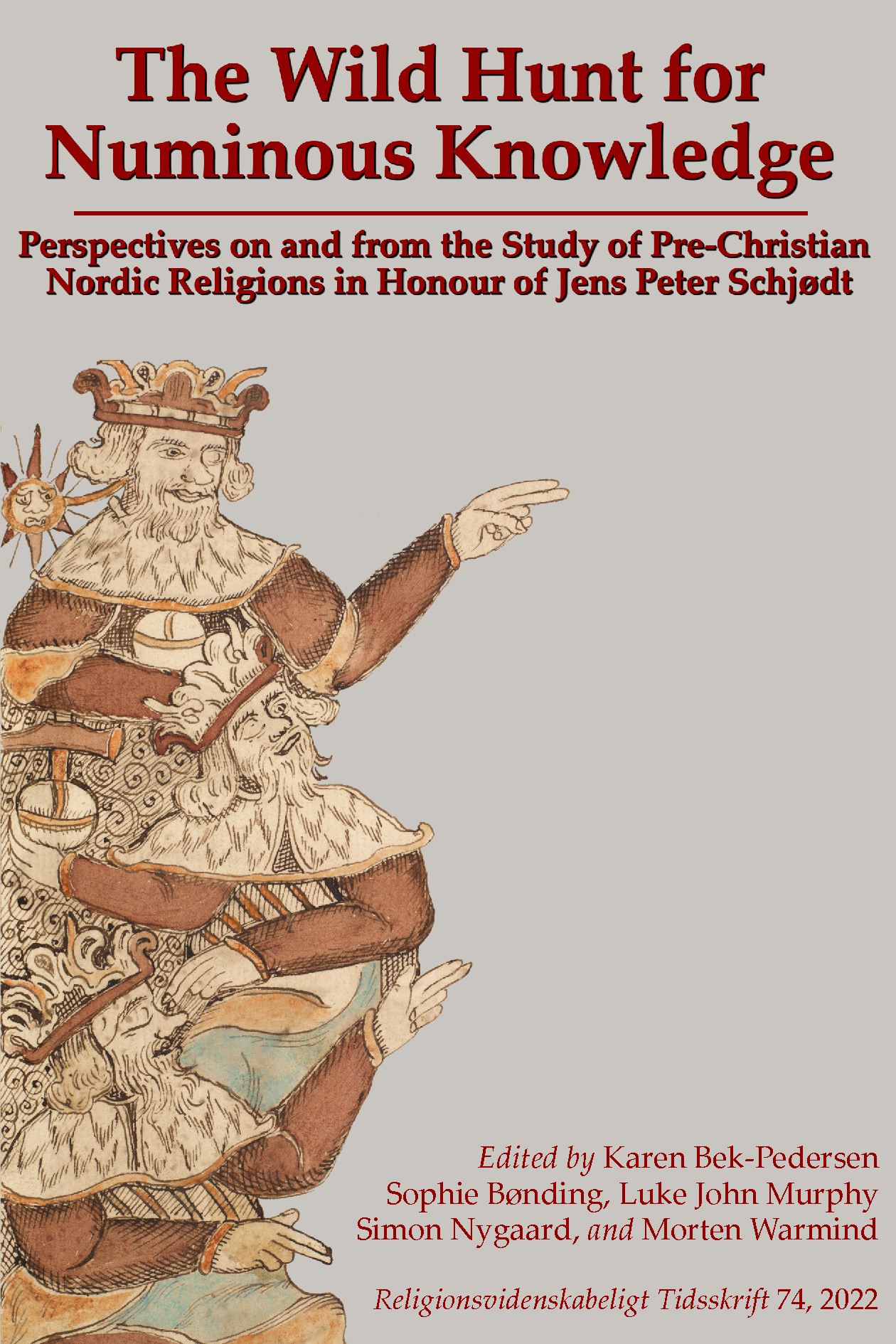Structures for the Transfer of Power in Ibn Fadlān’s Account of the Rus
DOI:
https://doi.org/10.7146/rt.v74i.132099Nøgleord:
Indo-European pantheon, Scandinavian royal power, dramatic roles of gods and humans, sacrifice by proxy, mythological triad, Turkic funeralsResumé
ABSTRACT: In Ibn Fadlān’s account of the Rus funeral, the Indo-European symbolic triad can be recognised in the sacrifice of three pairs of creatures and in the three pairs of men positioned at the neck, arms, and feet of the woman being sacrificed in the tent on board the ship. I suggest looking at the people in the tent as a set of those who are losing power which is about to be transferred to the new king. The deaths of the six creatures in pairs and the dog mentioned along with them can be interpreted as the deaths by proxy of the six men and the senior woman in the tent. The death of the young slave woman is the death by proxy of the queen, and also has a non-human counterpart in the hen killed by the young woman. When the dead man is included, there are nine people in the tent. According to the Indo-European model I have proposed, these could be the important people in the society who corresponded to nine of the ten gods in the pantheon, and both gods and humans can be regarded as enacting roles in a drama. The unrepresented tenth god would be the god of death, and the inauguration of the new king who lights the funeral pyre would apparently have included the sacrifice of a young man or his proxy corresponding to this god.
RESUME: I Ibn Fadlāns beretning om en Rūs-begravelse kan den indoeuropæiske triade ses i ofringen af tre par dyr og i de tre par mænd, der står ved halsen, armene og fødderne af den kvinde, der bliver ofret i teltet ombord på skibet. Mit forslag er, at personerne i teltet ses som dem, der mister den magt, som er i færd med at blive overført til den nye konge. De seks dyr, der bliver dræbt, samt den hund, der nævnes sammen med dem, kan opfattes som stedfortrædere for de seks mænd samt den ældre kvinde i teltet, der alle sammen ’dør’. Den unge trælkvindes død kan ses som substitut for dronningens død, og også denne død har en ikke-menneskelig pendant i den høne, som den unge kvinde dræber. Inkluderes den afdøde mand, er der ni personer i teltet. Ifølge den indoeuropæiske model, som jeg har fremsat, kunne disse være de vigtige personer i samfundet, som er modstykke til ni af panteonets ti guder, og både guder og mennesker kan 140 Emily Lyle ses som aktører i dramaet. Den ikke-repræsenterede tiende gud er dødsguden, og indsættelsen af den nye konge, som antænder ligbålet, ville have involveret ofringen af en ung mand eller hans stedfortræder som pendant til denne gud.
Downloads
Publiceret
Citation/Eksport
Nummer
Sektion
Licens
Alt publiceret materiale i RvT fra og med nr. 75 (2023) er underlagt en CC BY 4.0 licens, og forfatteren har ophavsretten dertil.
Forfatteren og RvT deler ophavsretten til materiale publiceret inden nr. 75





